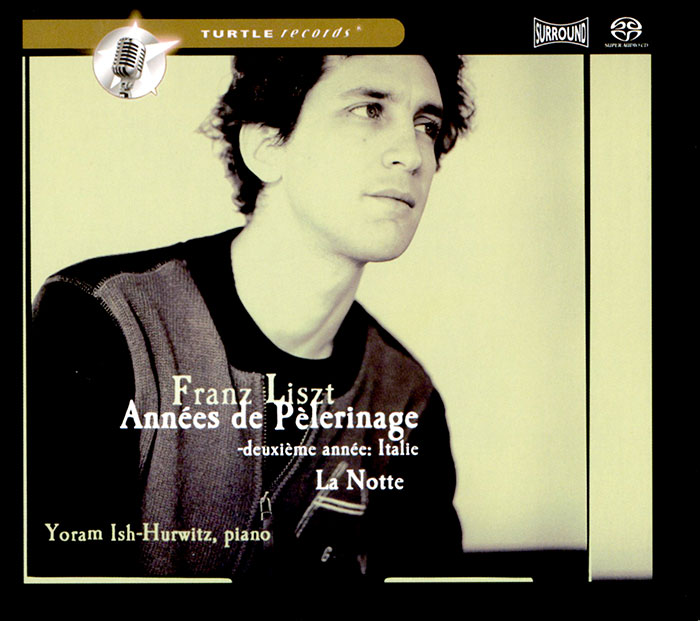Logowanie
Mikołaj - ten to ma gest!
Miles Davis, Horace Silver, Jay Jay Johnson, Percy Heath, Kenny Clarke, Lucky Thompson
Walkin'
20bit K2Super Coding - ale jak to brzmi!
Kasety magnetofonowe
Winylowy niezbędnik
ClearAudio
Double Matrix Professional - Sonic
najbardziej inteligentna i skuteczna pralka do płyt winylowych wszelkiego typu - całkowicie automatyczna
LISZT, Yoram Ish-Hurwitz
Années de Pelerinage, deuxieme annee - vol. 1
natywne DSD
There is an interesting parallel between Dante's pilgrimage as described in his Divina Commedia, which in essence explains how to get in heaven in three steps', and Liszt's Années de P?lerinage. But unlike Dante's Hell, Purgatorio and Paradise, the three Years in Liszt's cycle concern Nature, Art and God, thus forming its very own 'triptych of ascending levels'. Ultimately the Deuxi?me Année is about 'love': from the sacred love between Josef and Maria, as depicted in Sposalizio by Raphael, and the three sonnets by Petrarca, inspired by his love for Laura, through the tragic love story of Francesca da Rimini from Dante's inferno: married against her will Francesca falls in love with her brother in law, Paolo. When her husband discovers their liaison he kills both lovers. These examples make it clear that Liszt's main source of inspiration for this Second Year was Italian Renaissance Art. However, the seven pieces form much more than an exquisite art gallery, since Liszt manages to give the music a sense of wholeness that adds an entire new dimension to it. Although not part of the cycle, La Notte leaves this unity intact, acting like an epilogue. The piece is closely related to Il Penseroso as Liszt used the same musical material for both pieces. They are inspired by equally named sculptures by Michelangelo, which stand facing one another in the tomb of the Medici family in Florence. Apparently, the misery that surrounds us in our every day world is of all times, as witnessed by the poem which Michelangelo wrote commenting La Notte: I am glad to be asleep, I am glad to be a stone. While evil and shame prevail, Gladly both site and hearing I forgo So wake me not, hush whisper low! To me, Franz Liszt is one of the most fascinating personalities of the musical world of the nineteenth century. Not only can he be considered to be the archetype of the phenomenon concert pianist as we know it today, he also was a strong advocate for the works of numerous contemporary composers who struggled for recognition such as Wagner, Berlioz and Schumann, not to mention his pioneering work in the fields of composing and conducting. And even if there lies any truth in the allegations towards Liszt of being a superficial charlatan whose compositions were merely written to show off his pianistic skills, it certainly does not apply to the alternately temperamental, dramatic, lyrical, solemn and sometimes even humoristic pieces that make up the Années de P?lerinage. I feel that in this work form and content were melted together in a masterly manner, using few means if possible and thundering roar when necessary. Composed and rearranged during almost half a century it delivers a true panoramic insight into Liszt's development and versatility as an artist and consequently forms a pilgrimage by itself to at least one side of the real Liszt. Yoram Ish-Hurwitz































